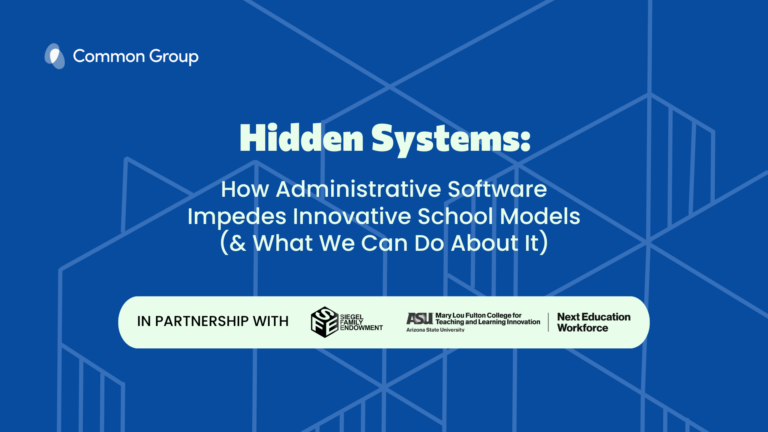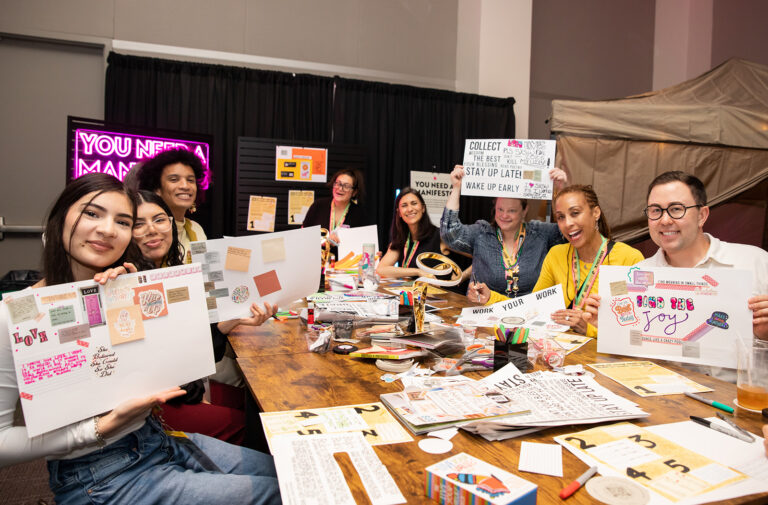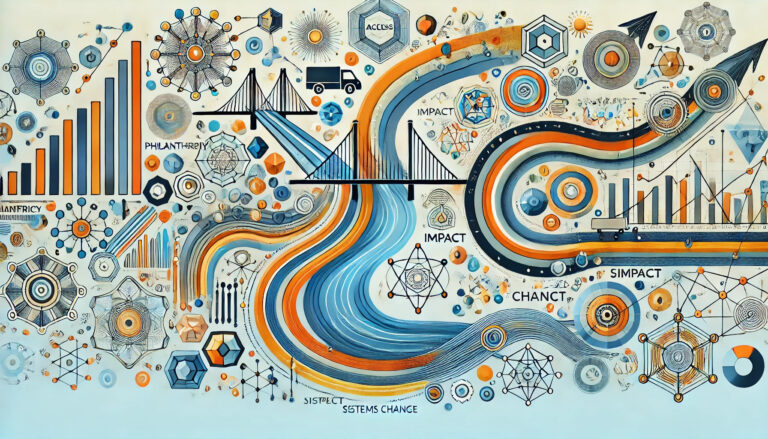How Modern Classroom Project and Teacher Advocates Are Scaling a Better Way to Reach Every Student

Many educators criticize the lecture-based “one-size-fits-all” teaching model as inadequate for serving the unique needs of individual students. But there’s less agreement on—and fewer resources for—teachers who are hoping to differentiate instruction and transform their classrooms.
Kareem Farah, a former math teacher, knows this challenge firsthand. When he and a fellow teacher tried to find alternatives to lecturing, they found that the marketplace provided few off-the-shelf solutions. So they decided to create their own. Over time those efforts became the Modern Classrooms Project, a nonprofit organization that Farah now leads.
We sat down with Farah to learn more about the Modern Classrooms Project’s instructional model; how and why the organization works with individual teachers; how the initiative plans to scale its approach through district partnerships; and the impact of changing instructional practice for teachers, students, and communities.
You began your career as a high school math teacher. How did that experience inspire you to create the Modern Classrooms Project?
In some ways the Modern Classrooms Project was founded by accident. We didn’t intend to build and scale an organization. My co-founder and I were just two frustrated high school math teachers.
We were flabbergasted at the fact that we couldn’t teach in a way that would allow us to meet a high-need student population with a diverse set of learning levels and social emotional needs. We were stuck teaching the same way that people have been teaching for hundreds of years. It was a classic one-size-fits-all model of instruction that I think most people have learned in and that most people are taught to teach through. That model is wildly ineffective for the vast majority of students.
My co-founder and I saw two options. We could restructure what we do in the classroom, or we could leave the profession. We took the restructure route. We thought there would be existing initiatives in the marketplace that would allow us to do that. But the marketplace really didn’t have an accessible pathway for teachers to redesign their classroom that wasn’t tied to some major district initiative, a new platform, a new technology, or a new school model. So we decided we needed to redesign our classrooms on our own.
What did you want to change in your instructional practice in order to serve your students better?
We decided to play around with the lecture component first. Live lectures are the biggest bottleneck that we have in K-12 education. We knew students weren’t listening and engaged. Students who were absent couldn’t access the lecture at all. It was a giant waste of our time. It’s where most of the behavior issues came up.
We built our own little videos to replace lectures as part of a blended learning strategy. The videos broke up the content and made it more engaging for students. When you don’t lecture you can have students work at different things at the same time. That’s what unleashed the self-pacing part of our model. From there we realized that if students can be at different spots in learning a concept, there needed to be something to dictate when they could go from that lesson to the next. That realization led us to develop a mastery-based learning and grading model.
Modern Classrooms’ model
We found that the model worked. We won some awards for the instructional approach. Once that happened, we realized that there was a group of teachers in our own local community who wanted to replicate what we were doing. That realization led us to found the Modern Classrooms Project.
From the beginning, the Modern Classrooms Project has focused on classroom educators as the lever of change. That makes sense given your prior work as an educator. Are there other reasons that you’ve focused on teachers?
K-12 education is a very complex, highly bureaucratic industry. Starting with leaders to create change can be transformational, but often change never actually hits classrooms. You see massive implementation gaps where ideas, technologies, and solutions sound good in a vacuum but very rarely ever reach an educator.
Educators are on the front lines. They spend every single day with students. At the Modern Classrooms Project we felt that if you can build something that actually makes educators’ lives better, you’re going to get a really big bang for your buck. On the flip side, if you are not building something that can make an educator’s teaching experience easier, you are not going to be able to scale that approach.
We’ve learned that when school and district leaders are on-board and create the conditions for which the teachers can do this effectively it certainly accelerates scale and increases the likelihood of quality implementation. We continue to focus on the educator, but we also have district partnerships and other implementations that engage entire systems.
How do those partnerships work? How does the Modern Classrooms Project respond to the needs of individual educators while also conforming to the requirements of larger systems?
We believe that there should be options for different circumstances. A teacher shouldn’t have to belong to a school that runs a particular solution or that has met various conditions to use the Modern Classroom Project. Any educator anywhere can access our model. The course is free and has every single piece of content we’ve ever created. Anyone can learn it.
If we want to ensure that thousands of educators—and therefore millions of students—are engaging with the model, it’s important that districts are brought in and make an investment. You can pair that with philanthropy, too. Through district partnerships we have the conditions to allow teachers to innovate freely with the support of leaders as opposed to innovating under the radar.
Our model hasn’t shifted programmatically. We still focus on three core elements: providing the structure for teachers to get information to students more effectively; enabling students to self-pace their learning; and helping the teacher assess student mastery. But our plan for scale has changed, with dual focus on individual educators and strategic partnerships.
In what other ways are you scaling the model and ensuring quality in how teachers are using the Modern Classroom Project approach?
We’ve done a lot on the mentorship side. We train teachers at scale. We’ve trained around 18,000 teachers to-date. We’ve been able to scale pretty leanly using a mentorship program. If you’re a teacher, you can access all the content that is associated with our experience asynchronously through the courses that we’ve built. And then you are assigned a mentor who is a teacher who’s credentialed in our system. The mentor coaches you through a competency based training experience.
We’re also engaged in a curriculum alignment project that we think will allow us to scale the Modern Classrooms Project in a transformational way. To date our program has been curriculum, grade-level, and content agnostic. The content of the Modern Classrooms Project course is designed to be suitable for any educator. On the other hand, we have rolled out a new solution that is aligned to two High-Quality Instructional Materials math curricula. Teachers work in districts that adopt a particular curriculum, and we’re providing the plug-and-play resources to use Modern Classrooms Project materials in the context of the lessons that those teachers are asked to teach.
Our early growth came from the flexibility that came from offering a curriculum-, grade-level-, and content-area agnostic solution. Any teacher could engage with our materials. However, we also found that this approach placed a significant burden on educators because they have to build out all of the components of the model for their respective classrooms. Not every educator is able to take on that burden.
Marrying our model with high-quality curricula eases that burden on educators. However, it also requires a lot of work on our end. We have to do in-depth analysis of the relationship between the curriculum and the Modern Classrooms model so that we can ensure that the curriculum is being implemented effectively while drawing on the benefits of our approach to instruction.
That’s important because when a teacher is adopting a new curriculum and their district is really strongly encouraging and, at times, enforcing the implementation, they want to make sure that they’re implementing the curriculum correctly. We want to show them how to use the Modern Classrooms Project model in the context of that particular curriculum.
That approach will allow us to get beyond the innovative educators who seek out the Modern Classrooms Project and instead serve every educator in a system. If we show up at the door with all of the resources pre-created, it’s a lot easier to build the conceptual bridge to the instructional model. We expect that this will allow Modern Classrooms Project to scale faster within a district, and particularly within a domain. You have much more control over implementation.
Are there any downsides to this way of scaling the Modern Classrooms Project? How does this curriculum-based approach to scaling complement your existing strategy for growth?
There are a million curricula and there’s a pretty sizable product-build associated with creating the solution for each one. Those are things that we need to consider as we think about where to put resources.
Even so, the base way we scale has never changed. We’re a movement. We offer an educational philosophy and model that can scale virally without anyone having to put that much energy behind it. Our free course has new users that join every single day. There are educators implementing our model in every single continent. My co-founder just wrote and published a book on our philosophy. And then the mentorship program is a more robust training experience if you want support. All of that has not stopped and we’ll continue with that work.
At the same time we’ve learned that the fastest way to scale is through district investment. To do that, you need to solve a problem for the district, and you need to be able to meet one of their core priorities. So the new curriculum-aligned solution gives us the ability to come into a district and say, “Hey, we know you’re trying to get this curriculum adopted. We also know that you’re struggling to differentiate to your students’ needs. And you’re really concerned about outcomes. This model allows you to improve your curriculum implementation and increase the quality of instruction ultimately leading to improved academic outcomes. Do you want to make this investment?”
That pitch becomes easier because we have so many educators who are strong advocates for our model. Part of the engine behind the movement is those teachers scream their belief in the Modern Classrooms Project approach from the rooftops to their district leaders.
How do you assess how well Modern Classrooms’ approach and programming are working for both grassroots educators and district-affiliated educators?
We assess impact differently for different groups. It’s impossible to reach thousands and thousands of individual educators and provide the level of tracking and dosage of support that you’re able to provide when districts invest in this model. But we can still track engagement with our free courses, how many teachers are certified as Distinguished Modern Classroom Educators, and monitor our teacher mentorship program. We want individual teachers in places where we aren’t able to go, but the level of impact tracking is going to be less than at the district level.
On the other hand, with really robust district partnerships that are increasingly around curriculum, we have the opportunity to obsessively track implementation in a variety of ways. The district’s very invested. You’re meeting with district leaders very consistently. You have a temperature check on what every single educator is doing and how you’re looking at a variety of outcomes across the board.
The obvious things that we can track with ease and get a pretty high survey response rate for are: (1) how educators are implementing our model and (2) how that implementation is affecting their perception of the profession. Are you able to work with students in small groups? Can you help students catch up? Are you able to serve all learning levels? These are all questions that we are able to ask educators.
In addition, we’ve examined the model’s impact in individual classrooms and across communities where we have gone deep. Those have shown increases in student outcomes, teacher retention, and student and teacher attitudes toward teaching and learning.
What are the factors that move the needle on whether a Modern Classrooms Project implementation is successful?
In the curriculum-agnostic solution it’s pretty clear that strong teacher buy-in is important, along with strong content knowledge. If you layer on teacher communities and leadership support, you get an even better likelihood of strong implementation.
We did a research study in Chesapeake County Public Schools in Virginia. When compared with their peers, Modern Classrooms Project teachers made gains in every single metric that the district measures. That’s because the district supports it. Instructional coaches are involved. Teachers are opted-in. These educators have strong content knowledge.
I’ve been to hundreds of one-off classrooms where educators do this model beautifully. They don’t necessarily have leader engagement or support or structures around it. But they’re highly motivated, and they have strong content knowledge.
Part of the purpose of the curriculum solution is to make the solution substantially more accessible to a wider pool of teachers. When we trained educators for the first pilot of our new curriculum solution, we found that 93% were leveraging the solution in some capacity in their classrooms when they were observed. This was a much higher percentage than we find when we look at users of the curriculum-agnostic resources. The only way to really drive implementation rates higher is to actually get into classrooms in a controlled way as we’re able to do through district partnerships and curriculum alignment.
What’s next for the Modern Classrooms Project?
I hope that the Modern Classrooms Project inspires other movements around pedagogical experiences that really empower teachers. That’s always been our goal, and that hasn’t changed.
The avenues for getting there have shifted though. We will sustain the curriculum-agnostic solution and we hope to scale the curriculum-aligned one. There’s an obvious pathway to growth by aligning to more and more curricula and more and more content areas over time. It’s expensive. It takes time. But it is really compelling. The curriculum-specific work is a way that we can reach districts.
Districts are the best and fastest pathway to impacting teachers, in my opinion. The vast majority of students learn in a district. Districts have the ability to scale things. How do you create the optimal experience for an educator through a district partnership that solves district leaders’ pain points but that also meets educators needs? And how do you do that efficiently? Those are the questions that we’re wrestling with.
We also hope to continue to leverage teacher leaders as a pathway toward scale. Educator advocates remain the secret sauce of Modern Classrooms. We have 500 part-time mentors who are teachers. They’re some of the best educators in the game. We’ve figured out how to capitalize on engaged, excited teachers, taking care of them, compensating them effectively and giving them options for how they can impact the community at-large. That’s the engine of this organization.
###
Kareem Farah is the CEO and co-founder of Modern Classrooms Project, where he and his team train and support teachers who seek to redesign their classrooms around blended, self-paced, mastery-based learning to better meet all students’ unique needs.
The Modern Classrooms Project builds upon Kareem’s experience as a high school math educator in Hawaii and Washington, DC. Instead of using a traditional lecture model, Kareem taught mathematics through a blended model where students accessed content through his self-made videos. The cornerstone of his classroom was the ability for students to work through the content at their own pace, and Kareem’s ability to employ mastery-based grading to evaluate student learning. In 2018, Kareem received the DC Public Schools Award for Classroom Innovation and was featured in Edutopia and CBS News for his work.
Kareem holds an undergraduate degree from Washington University in St. Louis and a master’s degree in secondary education from Johns Hopkins University.
Kareem regularly tweets about education at@KareemFarah23.





